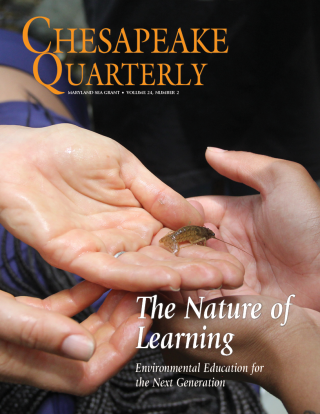Knauss legislative fellowships in Congress help build careers — and they're fun and educational. See our video and fact sheet for details.
R/DIS-2a
Effects of Cyanobacteria on Health and Disease of Blue Crab Callinectes sapidus: defining thresholds for exposure
Principal Investigator:
Eric SchottStart/End Year:
2011 - 2013Institution:
Institute of Marine and Environmental Technology, University System of MarylandCo-Principal Investigator:
Carys L. Mitchelmore, Chesapeake Biological Laboratory, University of Maryland Environmental ScienceTopic(s):
- Blue Crabs
Strategic focus area:
Sustainable natural resources of coastal MarylandDescription:
OBJECTIVES: Objective 1) Assess the effects of Microcystis toxins on blue crab immune functions. Using crabs fed defined amounts of toxic Microcystis for prescribed periods of time, we will measure: A. histological appearance of hematopoietic tissue and hemocytes, B. hemocyte number and hemolymph clotting time C. reactive oxygen production by hemocytes D. phenoloxidase activity in hemocytes METHODOLOGY: Hatchery-reared blue crabs will be exposed to defined amounts of Microcystis toxin (MC) by incorporating Microcystis of defined toxin content into crab food. Groups of crabs will be fed 1, 10, or 100 microgram/kg MC each day. At days 0, 2, 4, 8, 12 and 24, crabs will be sacrificed for analyses. To monitor MC depuration rates, after day 16, a subset of exposed crabs will be fed an MC free diet for an additional 16 days and sacrificed for toxin analyses at days 2, 4, 8 and 16 after ending MC diet. All crabs will be analyzed for MC content (by ELISA). Crab immune functions will be studied in each treatment group at several timepoints. Hemolymph smears will be examined by histology and assessments of coagulation, phenoloxidase, and reactive oxygen generation will be conducted. RATIONALE: Anthropogenically-influenced harmful algae blooms in Chesapeake Bay produce widespread ecosystem effects. In low salinity, blooms of toxic cyanobacteria, including Microcystis, are increasing in frequency and severity. Recurring cyanobacteria blooms occur in the upper Bay and Potomac River where the blue crab harvest is over 1 million pounds. There is little information available on the effects of MC toxins within blue crab. This exploratory project uses capacities of UMCES-CBL and UMCES-IMET to establish experimentally-determined thresholds for behavior of MC in blue crab. MC toxins may suppress innate immunity and thus may reduce the blue crab's defenses against pathogens. The study will help establish reference points for blue crab exposure to toxic Microcystis. Possible management actions include: Evaluation of whether crabs harvested in Microcystis blooms might contain unacceptable levels of MC for human consumption, forecast of crab harvest from a bloom area, and forecast of trophic movement of toxins.



